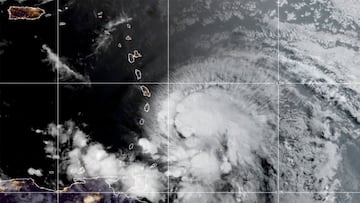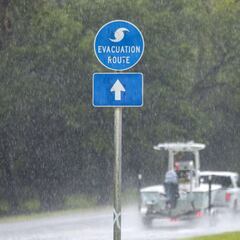Is hurricane season expected to be worse than normal this year?
The 2021 hurricane season has already made history with five named storms occurring earlier than ever before. Are more severe storms expected?


Rains and high winds from Hurricane Elsa, the first hurricane to make landfall in the US, created a path of destruction across the eastern seaboard. Images from severe flooding in New York City, including some Subway stations, are a stark reminder that the effects of climate change are already being felt.
Subways and highways were turned into rivers in New York City on Thursday as a result of severe weather and flooding brought on by Tropical Storm Elsa. pic.twitter.com/RHwNzVgIlu
— NowThis (@nowthisnews) July 9, 2021
Hurricane season in the US lasts from June to November. This year the National Oceanic and Atmospheric Administration (NOAA) has predicted that there is a “60% chance of an above-normal season, a 30% chance of a near-normal season, and a 10% chance of a below-normal season.“
NOAA scientists project that the Atlantic basin will see between “13 and 20 named storms (those with wind speeds of 39 mph. or higher), six to 10 hurricanes (with 74 mph. winds or higher), and three to five major hurricanes (with 111 mph. winds and above).”
When a storm begins to show certain characteristics such as “rotating circulation pattern and wind speeds reach 39 miles per hour,” it is given a name.
Source: Earth Sky
This year, four tropical storms and one hurricane have been named. When Elsa was named on 1 July, it broke the record for the earliest date a fifth storm was named during a season.
2020 was a historic hurricane season. Seven major hurricanes were recorded, a level not seen since the 2005 season which brought with it, Hurricane Katrina. Last year hurricanes led to over $50 billion worth of damage.
Are hurricanes getting worse?
In the 2014 National Climate Assessment, scientists began to explain how climate change impacts the severity and frequency of hurricanes. Changes to atmospheric conditions and warmer surface temperatures can increase the severity of storms, but exactly how and to what extent is still unknown.
In the report, the experts detailed how advancements in satellite technology in the 1980s have allowed them to track storms more closely. Since using satellite imagery to track storms, there has been a notable increase in the “intensity, frequency, and duration as well as the number of strongest (Category 4 and 5) storms.”
However, changes in the ocean’s weather patterns and currents are hard to predicate and run on timelines much longer than the year-to-year basis most policymakers use to inform their decision-making.
One factor that is understood by some policymakers is the cost these storms leave behind. Millions of Americans live in areas that tropical storms could impact, and as the severity increases, their lives, homes, and communities are at risk.
Related stories
While from 2000-2009, more hurricanes were reported compared to the following decade. But, from 2010 to 2019, the damage done by the storms was $474.01 billion, an increase of over $100 billion compared to the damage done in the previous decade. Last year alone, the seven major storms created over $50 billion in damages.

